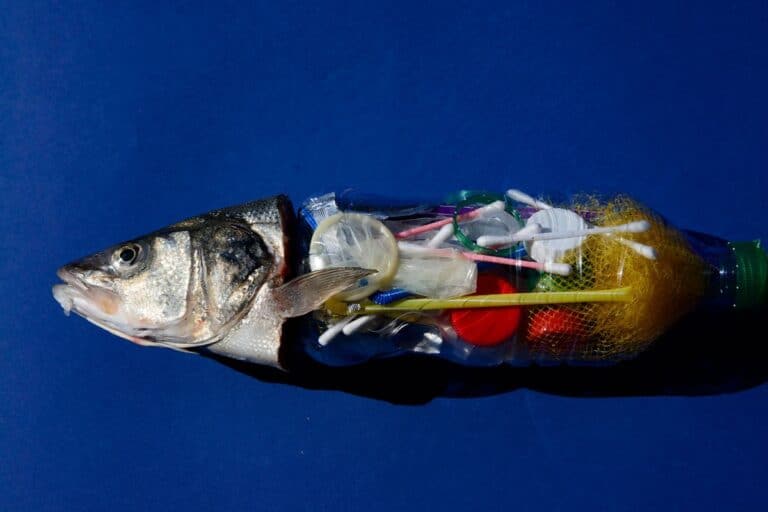Photo: Fish and plastic (Getty Images/Sergi Escribano)
Oysters, tuna and other wild-caught fish we eat often contain plastic
As an agrarian civilization, almost all of what humans eat is farmed — with the notable exception of seafood. Aside from some farmed fish, most seafood we consume is still caught in the wild. Yet while it might seem that there is something more pure and traditional about consuming “wild” food as opposed to farmed food, the seafood that we eat soaks in a sea contaminated by plastic — and it turns out that a lot of that pollution may be making its way into our bodies via seafood.
Indeed, when it comes to plastics, consumers of seafood may be eating so much of the pernicious pollution that they are regularly chowing down on the equivalents of soda bottles and credit cards. Yet you will never hear a literal “crunch,” and the reason for this is simple, unsettling and disgusting: The plastic in your seafood is “microplastic,” a term for any plastic particle that is less than 5 mm in length.
“According to the UN, there are over 50 trillion microplastics in the ocean.”
Though you can neither feel or taste it (usually), the odds are high that it is in your seafood. The most recent example of this came from a 2022 study in the scientific journal Marine Pollution Bulletin. It found that three out of four commercial fish species from Australia and New Zealand contained microplastics in their edible flesh. On average there were 2.5 microplastic particles for each fish.
Nor is this the only study to discover […]
Full article: Plastic pollution is filtering up into the fish that we eat

